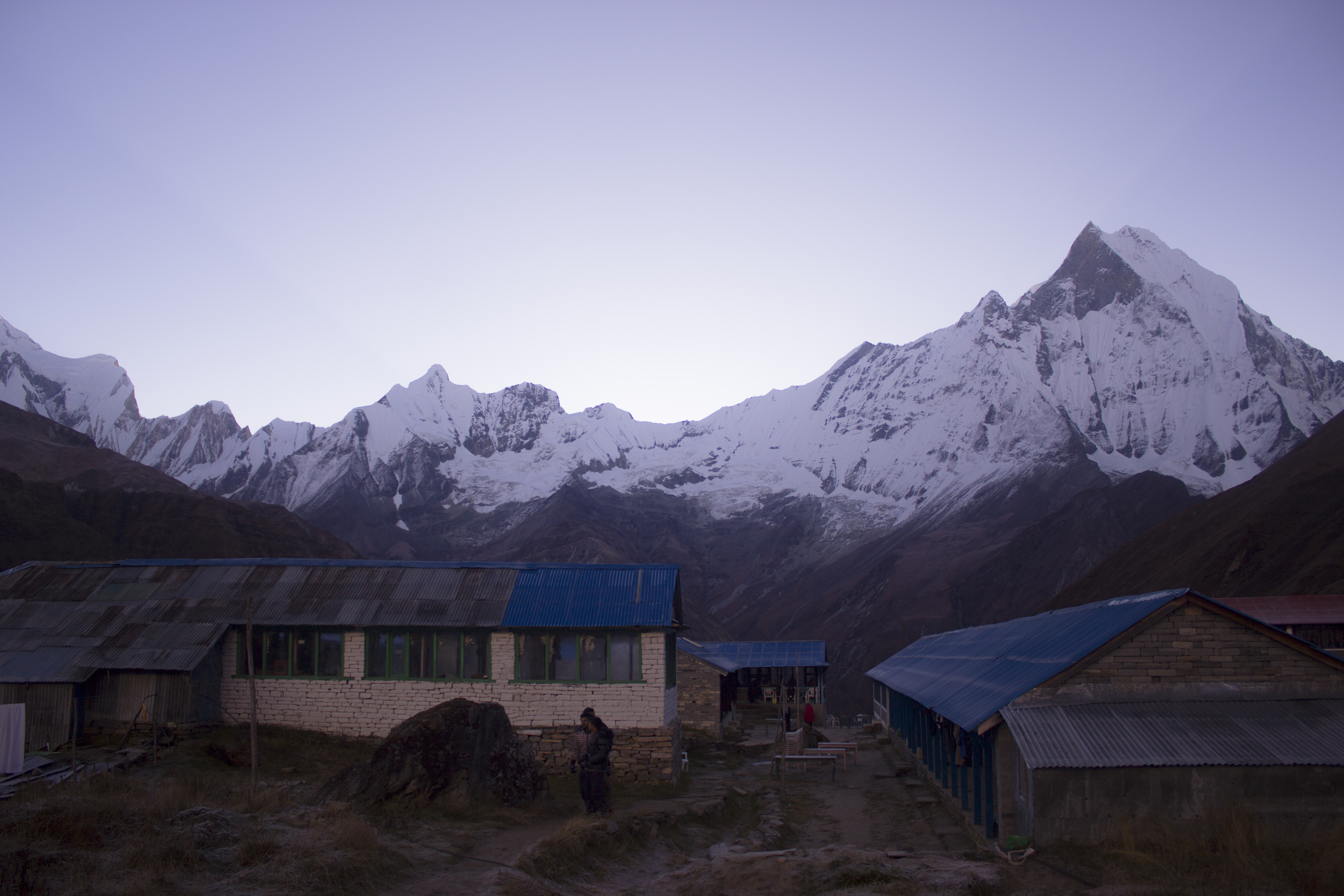layout: true <!-- <div class="my-footer"><span>arm.rbind.io/slides/xaringan</span></div> --> <!-- this adds the link footer to all slides, depends on my-footer class in css--> --- name: xaringan-title class: left, middle background-image: url(img/background.jpg) background-size: cover # Preworkshop to Tidyverse <img src="https://tidyverse.tidyverse.org/articles/tidyverse-logo.png" alt="tidyverse" width="180" /> ### .fancy[Basic R Programming] .large[Winson Yang | Texas Tech University | 2020-05-08] <!-- this ends up being the title slide since seal = FALSE--> --- class: inverse, center, middle # Let's Get Started --- class: right, middle <img class="rounded-circle" src="https://github.com/winsonfzyang.png" width="150px"/> # Find me at... [<svg style="height:0.8em;top:.04em;position:relative;" viewBox="0 0 512 512"><path d="M459.37 151.716c.325 4.548.325 9.097.325 13.645 0 138.72-105.583 298.558-298.558 298.558-59.452 0-114.68-17.219-161.137-47.106 8.447.974 16.568 1.299 25.34 1.299 49.055 0 94.213-16.568 130.274-44.832-46.132-.975-84.792-31.188-98.112-72.772 6.498.974 12.995 1.624 19.818 1.624 9.421 0 18.843-1.3 27.614-3.573-48.081-9.747-84.143-51.98-84.143-102.985v-1.299c13.969 7.797 30.214 12.67 47.431 13.319-28.264-18.843-46.781-51.005-46.781-87.391 0-19.492 5.197-37.36 14.294-52.954 51.655 63.675 129.3 105.258 216.365 109.807-1.624-7.797-2.599-15.918-2.599-24.04 0-57.828 46.782-104.934 104.934-104.934 30.213 0 57.502 12.67 76.67 33.137 23.715-4.548 46.456-13.32 66.599-25.34-7.798 24.366-24.366 44.833-46.132 57.827 21.117-2.273 41.584-8.122 60.426-16.243-14.292 20.791-32.161 39.308-52.628 54.253z"/></svg> @winsonfzyang](http://twitter.com/winsonfzyang) [<svg style="height:0.8em;top:.04em;position:relative;" viewBox="0 0 496 512"><path d="M165.9 397.4c0 2-2.3 3.6-5.2 3.6-3.3.3-5.6-1.3-5.6-3.6 0-2 2.3-3.6 5.2-3.6 3-.3 5.6 1.3 5.6 3.6zm-31.1-4.5c-.7 2 1.3 4.3 4.3 4.9 2.6 1 5.6 0 6.2-2s-1.3-4.3-4.3-5.2c-2.6-.7-5.5.3-6.2 2.3zm44.2-1.7c-2.9.7-4.9 2.6-4.6 4.9.3 2 2.9 3.3 5.9 2.6 2.9-.7 4.9-2.6 4.6-4.6-.3-1.9-3-3.2-5.9-2.9zM244.8 8C106.1 8 0 113.3 0 252c0 110.9 69.8 205.8 169.5 239.2 12.8 2.3 17.3-5.6 17.3-12.1 0-6.2-.3-40.4-.3-61.4 0 0-70 15-84.7-29.8 0 0-11.4-29.1-27.8-36.6 0 0-22.9-15.7 1.6-15.4 0 0 24.9 2 38.6 25.8 21.9 38.6 58.6 27.5 72.9 20.9 2.3-16 8.8-27.1 16-33.7-55.9-6.2-112.3-14.3-112.3-110.5 0-27.5 7.6-41.3 23.6-58.9-2.6-6.5-11.1-33.3 2.6-67.9 20.9-6.5 69 27 69 27 20-5.6 41.5-8.5 62.8-8.5s42.8 2.9 62.8 8.5c0 0 48.1-33.6 69-27 13.7 34.7 5.2 61.4 2.6 67.9 16 17.7 25.8 31.5 25.8 58.9 0 96.5-58.9 104.2-114.8 110.5 9.2 7.9 17 22.9 17 46.4 0 33.7-.3 75.4-.3 83.6 0 6.5 4.6 14.4 17.3 12.1C428.2 457.8 496 362.9 496 252 496 113.3 383.5 8 244.8 8zM97.2 352.9c-1.3 1-1 3.3.7 5.2 1.6 1.6 3.9 2.3 5.2 1 1.3-1 1-3.3-.7-5.2-1.6-1.6-3.9-2.3-5.2-1zm-10.8-8.1c-.7 1.3.3 2.9 2.3 3.9 1.6 1 3.6.7 4.3-.7.7-1.3-.3-2.9-2.3-3.9-2-.6-3.6-.3-4.3.7zm32.4 35.6c-1.6 1.3-1 4.3 1.3 6.2 2.3 2.3 5.2 2.6 6.5 1 1.3-1.3.7-4.3-1.3-6.2-2.2-2.3-5.2-2.6-6.5-1zm-11.4-14.7c-1.6 1-1.6 3.6 0 5.9 1.6 2.3 4.3 3.3 5.6 2.3 1.6-1.3 1.6-3.9 0-6.2-1.4-2.3-4-3.3-5.6-2z"/></svg> @winsonfzyang](http://github.com/winsonfzyang) [<svg style="height:0.8em;top:.04em;position:relative;" viewBox="0 0 512 512"><path d="M326.612 185.391c59.747 59.809 58.927 155.698.36 214.59-.11.12-.24.25-.36.37l-67.2 67.2c-59.27 59.27-155.699 59.262-214.96 0-59.27-59.26-59.27-155.7 0-214.96l37.106-37.106c9.84-9.84 26.786-3.3 27.294 10.606.648 17.722 3.826 35.527 9.69 52.721 1.986 5.822.567 12.262-3.783 16.612l-13.087 13.087c-28.026 28.026-28.905 73.66-1.155 101.96 28.024 28.579 74.086 28.749 102.325.51l67.2-67.19c28.191-28.191 28.073-73.757 0-101.83-3.701-3.694-7.429-6.564-10.341-8.569a16.037 16.037 0 0 1-6.947-12.606c-.396-10.567 3.348-21.456 11.698-29.806l21.054-21.055c5.521-5.521 14.182-6.199 20.584-1.731a152.482 152.482 0 0 1 20.522 17.197zM467.547 44.449c-59.261-59.262-155.69-59.27-214.96 0l-67.2 67.2c-.12.12-.25.25-.36.37-58.566 58.892-59.387 154.781.36 214.59a152.454 152.454 0 0 0 20.521 17.196c6.402 4.468 15.064 3.789 20.584-1.731l21.054-21.055c8.35-8.35 12.094-19.239 11.698-29.806a16.037 16.037 0 0 0-6.947-12.606c-2.912-2.005-6.64-4.875-10.341-8.569-28.073-28.073-28.191-73.639 0-101.83l67.2-67.19c28.239-28.239 74.3-28.069 102.325.51 27.75 28.3 26.872 73.934-1.155 101.96l-13.087 13.087c-4.35 4.35-5.769 10.79-3.783 16.612 5.864 17.194 9.042 34.999 9.69 52.721.509 13.906 17.454 20.446 27.294 10.606l37.106-37.106c59.271-59.259 59.271-155.699.001-214.959z"/></svg> winsonfzyang.github.io](https://winsonfzyang.github.io) [<svg style="height:0.8em;top:.04em;position:relative;" viewBox="0 0 512 512"><path d="M476 3.2L12.5 270.6c-18.1 10.4-15.8 35.6 2.2 43.2L121 358.4l287.3-253.2c5.5-4.9 13.3 2.6 8.6 8.3L176 407v80.5c0 23.6 28.5 32.9 42.5 15.8L282 426l124.6 52.2c14.2 6 30.4-2.9 33-18.2l72-432C515 7.8 493.3-6.8 476 3.2z"/></svg> winson.yang@ttu.edu](mailto:winson.yang@ttu.edu) --- # Who am I -- Second year Experimental (Cognitive) student. -- - Projects include Neurofeedback, Neuroscience of Meditaition, Meta-awareness and flexibility, Social Function in Neurodegenerative diseases -- Programming enthusiast -- - data visualization, UX/UI, software development for neuroscientists and psychologists - Statistical programming education and workshop development -- Interests -- - classical piano, Photography, baking, cooking, hiking, .pull-left[ .pull-left[  ] .pull-right[  ] ] .pull-right[ .pull-left[  ] .pull-right[  ] ] --- class: inverse, center, middle # Who are you and why are you here? --- # Workhop aims Introduce the main components of the Tidyverse - readr (read files) - dplyr (manipulate data) - ggplot2 (make awesome graphs) I have to assume you have a basic knowledge of R We don't really have time to cover all of the tidyverse (it is a huge universe!) --- class: inverse, center, middle # Part 0: Basic R programming --- # R is a calculator R can be thought of as a calculator, where you can perform different operations such as addition, subtraction, multiplication, divisions, and exponentiation. These are just some examples: .pull-left[ ```r 4 + 4 # addition ``` ``` # [1] 8 ``` ```r 4 - 4 # subtraction ``` ``` # [1] 0 ``` ```r 4 * 4 # multiplication ``` ``` # [1] 16 ``` ] .pull-right[ ```r 4 / 4 # division ``` ``` # [1] 1 ``` ```r 4 ^ 4 # exponentiation ``` ``` # [1] 256 ``` ```r sqrt(4) # Square root ``` ``` # [1] 2 ``` ] --- # Objects in R As R is an object-based language, you can name any value, or string or set it as a variable. For example, you can set 4 to be called a using `a = 4`, or `a <- 4`. Then when you want to call out 4, you can type `a` in the editor to call out the variable. .pull-left[ ```r a <- 4 # numerics a ``` ``` # [1] 4 ``` You can also perfom calculations with the objects you have created! ```r a + a # Addition a - a * 2 # Subtraction & Multiplication ``` ``` # [1] 8 # [1] -4 ``` ] .pull-right[ ```r b <- "Hello world!" # characters b ``` ``` # [1] "Hello world!" ``` However, you cannot perform mathematical calculations on characters! ```r b - b # Gives an error! ``` ``` # Error in b - b: non-numeric argument to binary operator ``` ] --- # Naming your objects You can name your objects anything you want (up to your imagination!), but there are a few rules. Names cannot start with number, and they cannot use special symbols such as `^`, `!`, `$`, `@`, `+`, `-`, `/`, or `*`: <table> <thead> <tr> <th style="text-align:left;"> GoodNames </th> <th style="text-align:left;"> BadNames </th> </tr> </thead> <tbody> <tr> <td style="text-align:left;"> a </td> <td style="text-align:left;"> 1a </td> </tr> <tr> <td style="text-align:left;"> Boo </td> <td style="text-align:left;"> !Boo </td> </tr> <tr> <td style="text-align:left;"> FOO </td> <td style="text-align:left;"> $ </td> </tr> <tr> <td style="text-align:left;"> my_variables </td> <td style="text-align:left;"> ^my_variables </td> </tr> <tr> <td style="text-align:left;"> .variables </td> <td style="text-align:left;"> /variables </td> </tr> <tr> <td style="text-align:left;"> mod.1 </td> <td style="text-align:left;"> *mod.1 </td> </tr> </tbody> </table> Some best practice of object naming: The object name should be **`consise`**, **`meaningful`**, **`consistent`**, and **`specific`**. --- # Vectors Vectors contain **elements of the same type**. The data types can be integer, double, character, logical, complex or raw (we don't go into complex or raw data). Vectors are generally created using the `c()` function. -- .pull-left[ - integer (numbers without decimcals) ```r v1 <- c(1, 2, 3, 4, 5) v1 ``` ``` # [1] 1 2 3 4 5 ``` - double (numbers with decimals) ```r v2 <- c(1.234, 0.632, -0.234, 7/42) v2 ``` ``` # [1] 1.2340000 0.6320000 -0.2340000 0.1666667 ``` ] -- .pull-right[ - character/strings (text) ```r c("Hello", "World", "!", "Are you", "555?") ``` ``` # [1] "Hello" "World" "!" "Are you" "555?" ``` - logical ```r c(TRUE, TRUE, FALSE, F, T) ``` ``` # [1] TRUE TRUE FALSE FALSE TRUE ``` ```r # Do not use F or T for logical. It gets confusing ``` ] --- # Vectors with different types of elements What happens when you have a vector that contains different types of elements? They will coerce into a single type of element -- .pull-left[ - integers and doubles ```r v1 <- c(1L, 2L, 3L) # putting L after a number makes it an integer v2 <- c(1, 2.86, 3) v1 v2 ``` ``` # [1] 1 2 3 # [1] 1.00 2.86 3.00 ``` ```r typeof(v1) # typeof() determines the type of an object typeof(v2) ``` ``` # [1] "integer" # [1] "double" ``` ] -- .pull-right[ - characters, logicals and doubles ```r v3 <- c("Hello", TRUE, 555) v3 ``` ``` # [1] "Hello" "TRUE" "555" ``` ```r typeof(v3) ``` ``` # [1] "character" ``` ] --- # Data Frames While vectors are one-dimensional, a data frame is a table-like data structure that is two-dimensional in nature. -- Data frames can store multiple types of elements, such as doubles, logicals, and characters -- ```r df <- data.frame(c(-9.1,0.2,3.4,4,5), # Doubles c(FALSE, TRUE, TRUE, FALSE, FALSE), # Logicals c("Var1", "Var2", "Var3", "Var4", "Var5")) # Characters names(df) <- c("Double", "Logical", "Character") # Use names() to view the column names df ``` ``` # Double Logical Character # 1 -9.1 FALSE Var1 # 2 0.2 TRUE Var2 # 3 3.4 TRUE Var3 # 4 4.0 FALSE Var4 # 5 5.0 FALSE Var5 ``` --- # Data Frames We can check the structure of the data frame using `str()` to check the type of element of each column. ```r str(df) # str() stands for structure ``` ``` # 'data.frame': 5 obs. of 3 variables: # $ Double : num -9.1 0.2 3.4 4 5 # $ Logical : logi FALSE TRUE TRUE FALSE FALSE # $ Character: Factor w/ 5 levels "Var1","Var2",..: 1 2 3 4 5 ``` We see that R automatically converts the character column into a factor! --- # Loading and saving data In any programming language, we must know how to load and save our data. In R, we can load our data with various functions: .pull-left[ - text files: `read.table()` - csv files: `read.csv()` ] .pull-right[ - xlsx files: `read.xlsx()` using the `xlsx ` package - SPSS data: `read.sav()` using the `haven` package ] -- ## We also must know how to save our data! -- I would recommend saving your data in **`.csv`** format as it loads and saves faster. Additionally, whether loading or saving data, we can save it in specific folders using `file.path(yourpath, filename)`. In summary, this is how a saving/loading data looks like in R: -- ```r rootdir <- "D:/Winson/Github/R-Workshop" datadir <- file.path(rootdir, "data") # Construct the path to the data directory csvfile <- "df_example.csv" file.path(datadir, csvfile) # Gives the full path ``` ``` # [1] "D:/Winson/Github/R-Workshop/data/df_example.csv" ``` -- You will then type `write.csv(df, file.path(rootdir, csvfile))` to save the file. Simple, isn't it? --- class: inverse, center, middle # Thanks! Slides created via the R package [**xaringan**](https://github.com/yihui/xaringan).